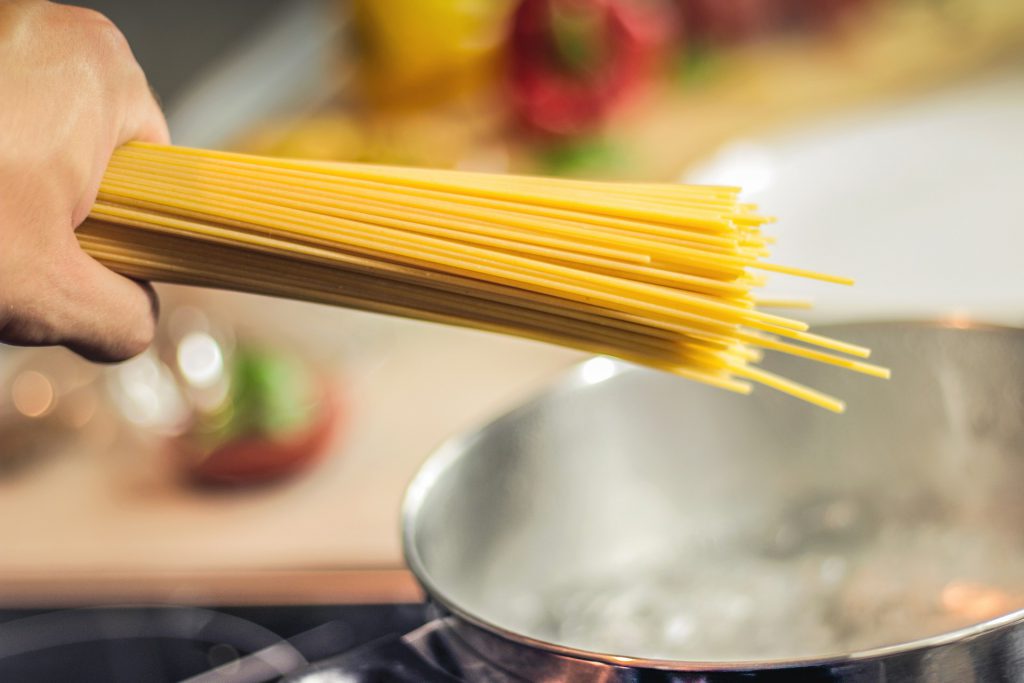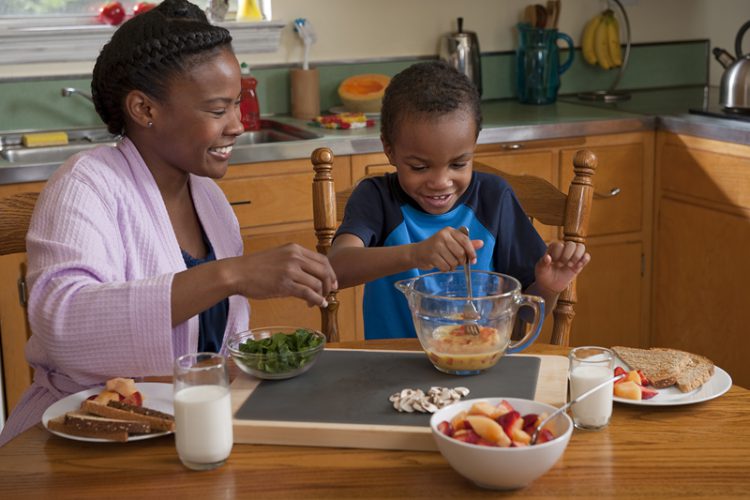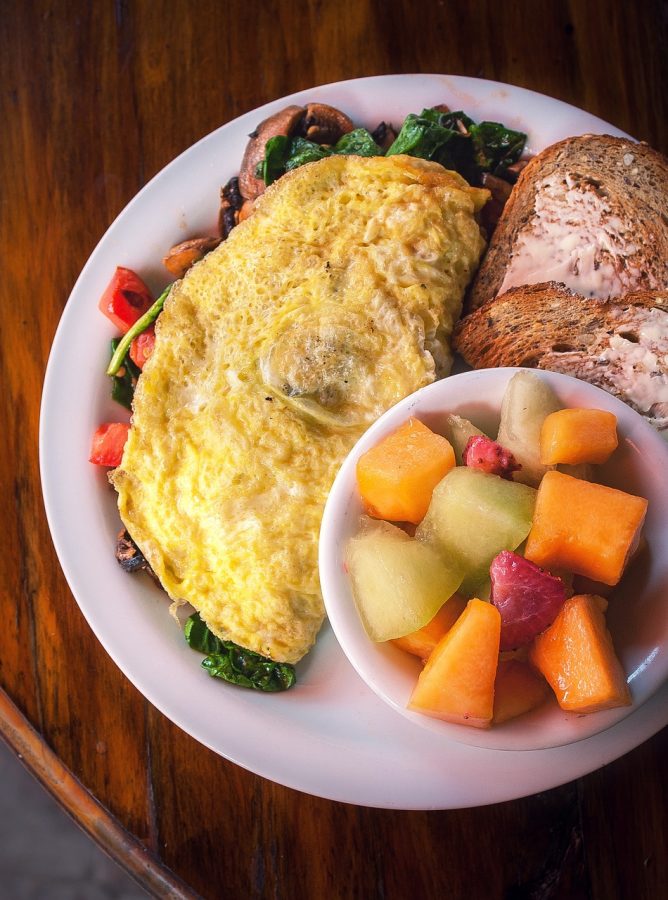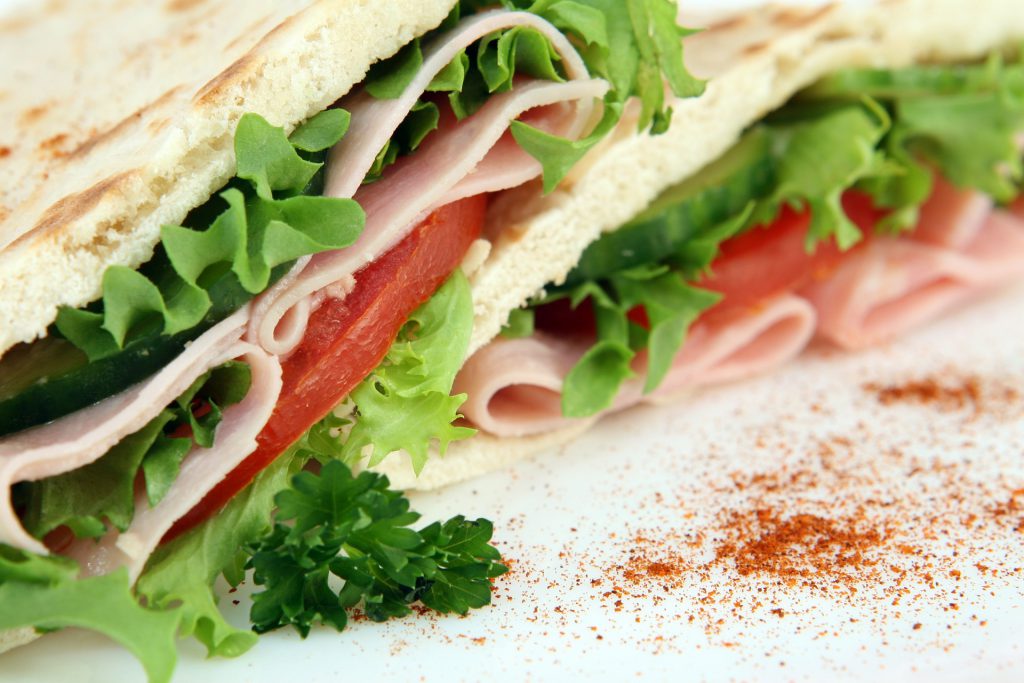Family Meals: More than just eating together

Family meals help provide regular, consistent opportunities to create shared experiences that are meaningful and offer a sense of belonging to all. Research has shown that regular and meaningful family meals offer a large variety of benefits to children and parents.
- Family meals provide a sense of family unity and identity. Family meals become a vehicle for carrying on valued family traditions, such as having a particularly favorite dish on someone’s birthday or going to a favorite place to eat together on special occasions.
- Family meals make a positive impact on young children’s language acquisition and literacy development. Family meals furnish a daily opportunity for a parent or sibling to speak to an infant or toddler, and help them learn words, understand language and build conversation.
- Family meals are associated with improved dietary intake among family members. For example, several large studies have shown that regular family meals are strongly associated with increased consumption of fruits, vegetables, grains and other healthy food choices while also linked with lesser consumption of fried or fatty foods, soft drinks or other less healthy food choices
Learn more about strengthening family bonds and improving your family’s wellness here: https://www.ag.ndsu.edu/eatsmart/eat-smart.-play-hard.-magazines-1/2009-eat-smart-play-hard-magazine/test-item
Susan
How to Buy Pasta

Is there anything more satisfying than a bowl of pasta topped with a delicious, tummy-filling sauce? I don’t think so!! Pasta is used in many cuisines around the world and comes in a variety of sizes and shapes from angel hair to ziti.
When buying pasta look for ones made from whole grain. Pasta that is 100 percent whole-wheat has 4-7 grams of fiber, compared to only 2 grams in regular pasta. You can also find pastas made from quinoa, kamut, amaranth and buckwheat. Flavored pastas such as spinach and tomato aren’t usually made from whole grain and they don’t even count as a serving of vegetables, because they usually contain only traces of vegetables for coloring and a hint of flavor. Be sure to use portion control or you can over-indulge. 2 ounces of uncooked pasta per person is all you need.
Some tips for buying pasta:
- Look for pasta with the most whole grains (you may have to try several brands to find a favorite). If all the grains listed are whole, the pasta is 100 percent whole grain. If you choose a whole-grain blend, compare nutrition labels to get the one highest in fiber.
- Fresh pasta can be delicious—and more healthful if you can find whole-grain varieties. But watch out for extra fat and calories in fresh ravioli and other stuffed pastas. Locally made pastas may not always carry nutrition information.
- Buy spinach and other “flavored” pastas if you like the way they look and taste—not because you think they are more healthful.
- If you shop at a health-food store, don’t assume that the pasta is necessarily whole grain, even if its ingredients sound more healthful. Same for organic brands. A pasta that says “100 percent durum semolina” or “golden amber durum wheat,” for example, is made from refined wheat flour.
- If you’re sensitive to gluten, don’t pass over pasta; pick one made from an alternative grain that is free of gluten, such as buckwheat or rice.
- If you don’t like one brand of whole-grain pasta, try another, since flavors and textures vary. The shape of the pasta can make a difference, too. For a lighter texture, choose thin spaghetti, say, over penne or rotini. And don’t overcook—these pastas can get mushy fast.
Go light on your sauce and try to incorporate more vegetables in your pasta dishes for more healthy eating. And, as the Italians like to say, “Mangia”!!! That means “Eat”!!!
Suzanne
Break the Fast with Breakfast
Since we were kids, we’ve been told breakfast is the most important meal of the day. But, do you know why? Our bodies fast each night as we sleep. By morning, our blood glucose levels have been exhausted and need replenishing. Glucose gives our bodies fuel to function both physically and mentally. Breakfast provides that fuel.
- Here’s a quick list of some breakfast eating benefits:
Adults and children who skip breakfast have trouble staying focused at work and at school. - No breakfast means no energy. Breakfast skippers become fatigued and grouchy more easily.
- Breakfast provides the nutrition we need each day. Researchers have shown that people who eat breakfast are more likely to meet their needs for calcium, iron, riboflavin, folic acid, iron, vitamins A and D and other nutrients. They also eat less fat.
- People who eat breakfast tend to eat more healthfully all day.
- Breakfast skippers usually don’t make up for the nutrients they missed at breakfast – and they may end up overeating later in the day.
- Eating breakfast helps with weight management – Grabbing high calorie snacks and overeating increases calorie intake, which in turn, causes weight gain.
 So, now that we know why eating breakfast is important, what does a good breakfast look like?
So, now that we know why eating breakfast is important, what does a good breakfast look like?
- Aim for variety. Choose foods from three or four different food groups, such as a grain, meat, fruit and milk.
- Have some protein. Researchers have shown that people who eat a protein-containing breakfast performed better on tests involving thinking and concentration. For example, having a glass of milk, container of yogurt, a piece of cheese, peanut butter on your toast or a hard-cooked egg all would add protein.
- Choose cereal wisely. When shopping, look high on the shelves instead of at eye level or lower, where the kids’ cereals often are placed.
- Read the Nutrition Facts labels carefully. Compare fiber, sugar content, vitamins and minerals.
- Compare cereal prices. Consider store brands, and use the unit price found on most store shelves.
- Choose whole-grain cereals and whole-grain breads. To select whole-grain foods, check the first couple of items on the ingredient list. For example, look for oatmeal, whole wheat or whole grain.

Below are some breakfast ideas that might help you start your day.
- Cereal with sliced bananas and milk
- Homemade cereal mix with whole-grain cereal, nuts, dried fruit and milk
- Graham crackers with peanut butter, and a fruit and yogurt smoothie
- Waffles with fresh strawberries, lean ham and low-fat milk.
- Oatmeal with raisins and low-fat milk
- Peanut butter on whole-wheat toast, apple slices and low-fat milk
- Mini-pizzas made with English muffins, pizza sauce, cheese, Canadian bacon or other toppings and orange juice
- Scrambled eggs, whole-wheat toast, orange slices and low-fat milk
- Scrambled eggs with salsa wrapped in tortillas, sliced peaches and low-fat milk
Source:
https://www.ag.ndsu.edu/publications/food-nutrition/now-serving-breakfast/fn694.pdf https://njaes.rutgers.edu/sshw/message/message.asp?p=Health&m=216
-Virginia
Coffee: Is it Good for our Health?
The answer is…it can be.

About 54% of Americans over the age of 18 drink coffee every day. So, how does coffee affect our health? Recent studies indicate there are positive outcomes depending on our intake and what we put in our coffee. Moderate consumption of coffee may contribute to reduction of disease risks. These diseases include but are not limited to diabetes, heart disease, Parkinson’s, and cirrhosis.
However, drinking too much coffee has a downside. Although a cup of coffee (plain) has about 2 calories, many of us prefer to drink our coffee sweetened. Adding ingredients like sugar, flavored syrups, and cream dramatically increases total calories and fat. For example, a 16-ounce (or grande) Starbucks Pumpkin Spice Latte (made with 2% milk and whipped cream) contains 380 calories, 14gm of fat, and 50gm of sugar…that’s over 12 teaspoons! [source ] This is a lot more than our bodies need.
The 2015-2020 Dietary Guidelines recommend that we limit added sugar to less than 10 percent of our total calories. This could range from 6 to 12 teaspoons depending on our caloric requirements.
In addition, high consumption of caffeinated coffee can also have a negative impact on birth outcomes. Although studies aren’t entirely conclusive, there is a greater chance of late miscarriage and/or stillbirth among women who have a high caffeine intake.
Before you order or make that next cup of coffee, be mindful of what additional ingredients you put in it.
Check out these resources for more information:
Coffee and Health (https://www.hsph.harvard.edu/news/multimedia-article/benefits/)
What the Dietary Guidelines say about added sugars
–Stephanie
Try Sandwiches for Dinner This Week!

Sandwiches are an easy, no-cook, heat-free way to prepare a quick dinner for the family. The sandwich is named after John Montagu, 4th Earl of Sandwich, an 18th-centry English aristocrat. The story goes that he asked for meat tucked between two pieces of bread. Others saw how easy it was to eat and began to order “the same as Sandwich!”
During the summer we usually have a sandwich for dinner at least once a week. I try to use leftover meat from a previous meal to stretch my food dollar and speed up my preparation time. For variety, we like to use different breads to make our sandwiches. One of our favorites is chicken salad stuffed into pita bread. Try this recipe from our friends at Fruit and Veggies More Matters.
Chicken Pita Sandwiches – makes 6 sandwiches
Ingredients
- 2 cups cooked chicken, chopped
- ½ cup celery, diced
- ½ cup apple, diced
- ½ cup grapes, halved
- * 1 cup dried cranberries OR raisins
- 1 cup plain low-fat yogurt
- 6 small green leafy lettuce leaves
- black pepper, to taste
- 3 (6 inch) whole wheat pita breads, hal ved
Directions
- In a medium bowl, combine chicken, celery, apple, grapes, dried cranberries, and yogurt.
- Mix gently. Season with pepper.
- Place 1 lettuce leaf in each pita half. Fill pita with chicken mixture, dividing evenly.
Suzanne